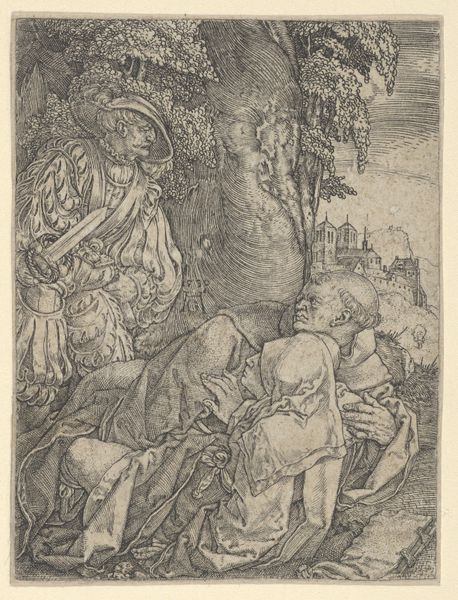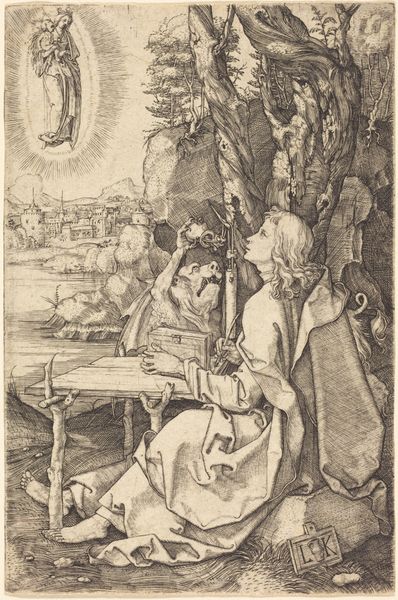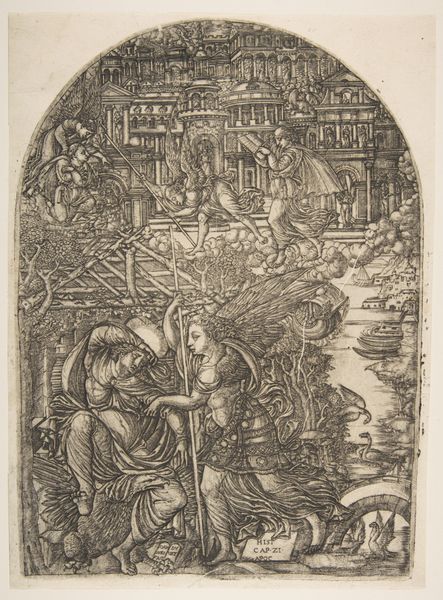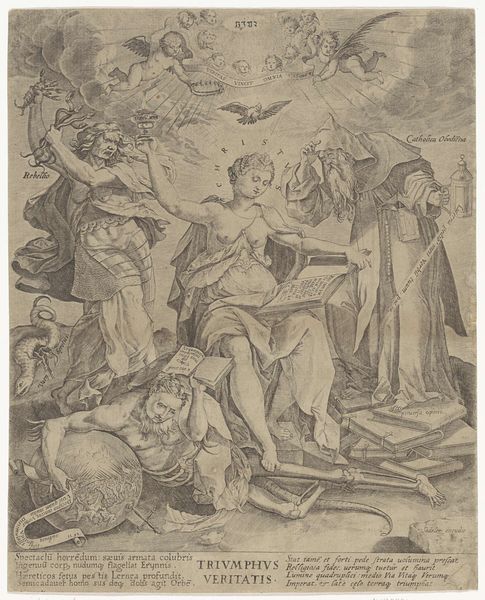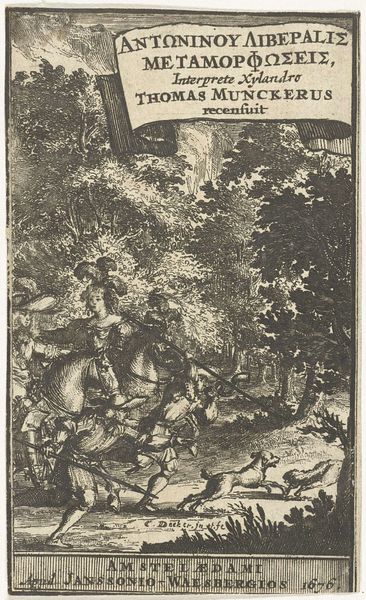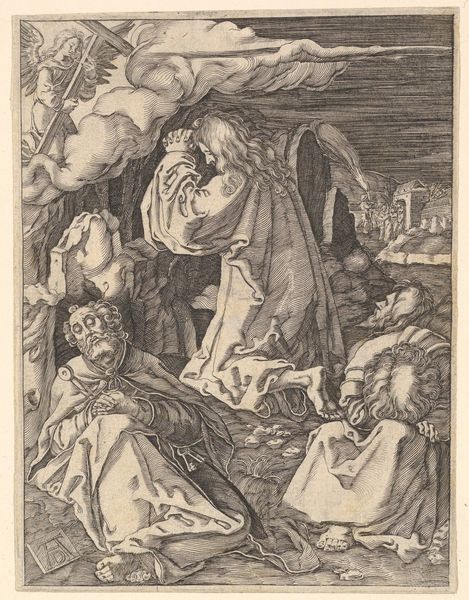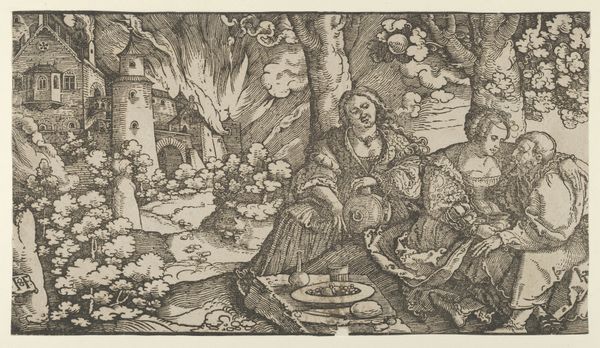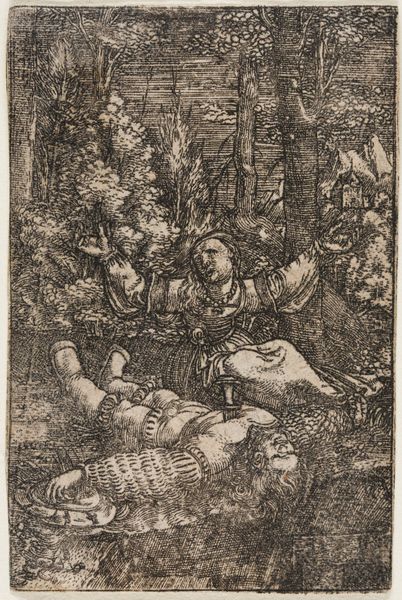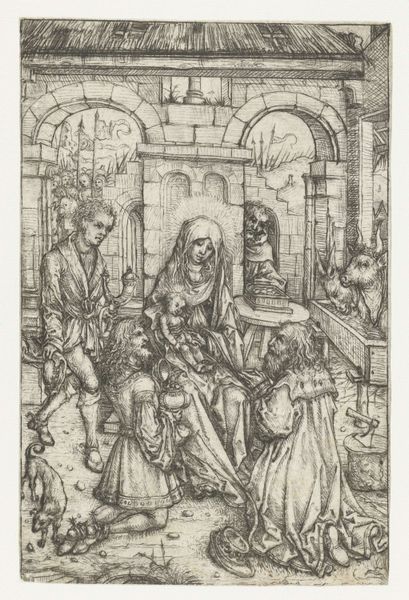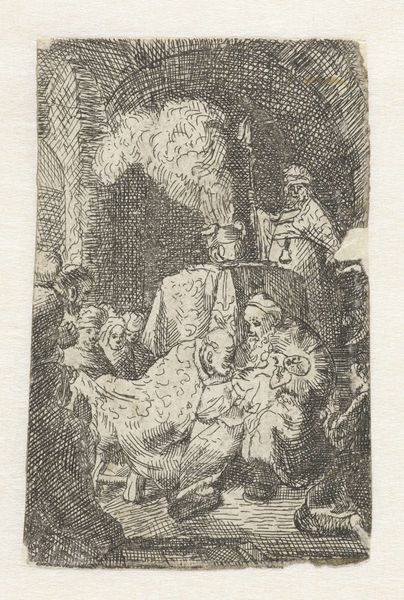
print, engraving
#
pen drawing
# print
#
landscape
#
figuration
#
genre-painting
#
history-painting
#
northern-renaissance
#
engraving
Dimensions: height 94 mm, width 71 mm
Copyright: Rijks Museum: Open Domain
Heinrich Aldegrever made this tiny print, Lot and his Daughters, in 1530 using a technique called engraving. This was a highly skilled, labor-intensive process. The artist would have used a tool called a burin to carve lines directly into a copper plate, then ink the plate and press it onto paper. Look closely, and you can see how the cross-hatched lines create areas of shadow and depth, defining the figures and the burning city in the background. In its time, printmaking was a relatively new technology, and it allowed artists to circulate images widely. Aldegrever was part of a generation that used printmaking to spread ideas during the Reformation. But it’s important to remember that engravings like this were also luxury goods, made for a discerning audience that appreciated skill and detail. The value of the work lies not only in its imagery, but in the time and expertise required to produce it. Appreciating the labor involved helps us to move beyond simply considering the subject matter, and understand the social context in which it was made.
Comments
No comments
Be the first to comment and join the conversation on the ultimate creative platform.

